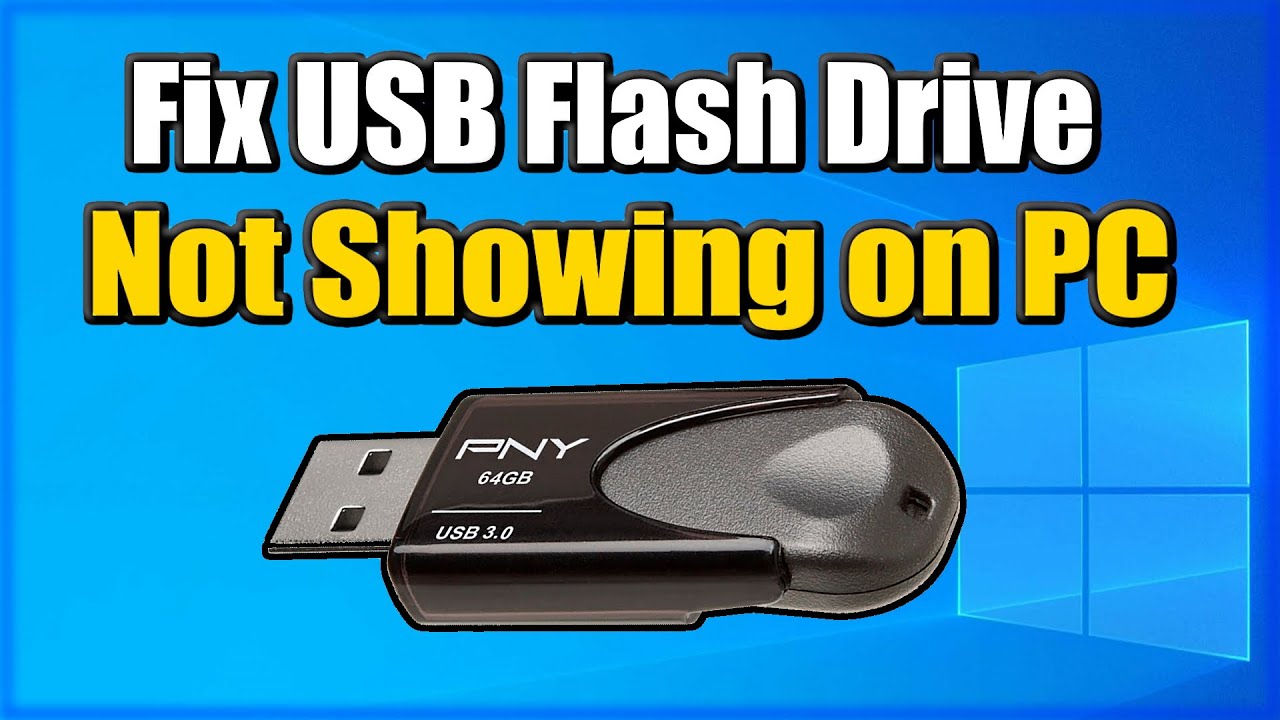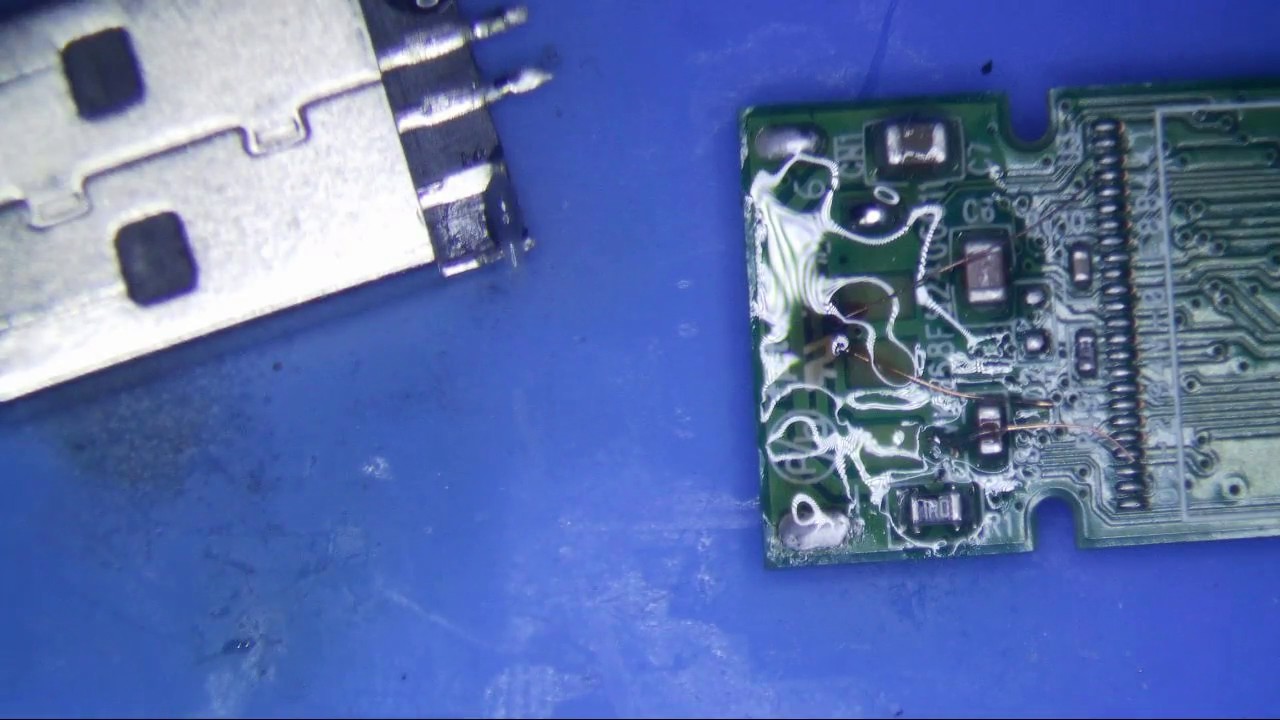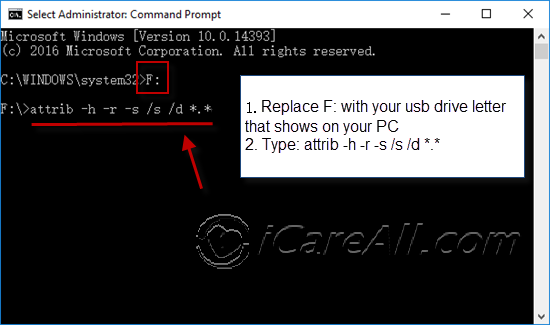Tips To Fix A Missing Flash Drive

Have you ever plugged in your trusty flash drive, only to find that your device isn't recognizing it? Losing access to important files stored on a flash drive can be a frustrating experience. Fortunately, there are several methods you can try to get your missing flash drive back in action. In this comprehensive guide, we will explore various troubleshooting techniques to help you identify and resolve the issue. By following these expert tips, you'll be able to fix your missing flash drive and regain access to your valuable data.
Understanding the Problem: Common Causes of Missing Flash Drives

Before diving into the solutions, it’s crucial to understand the potential reasons behind a missing flash drive. Several factors can contribute to this issue, ranging from hardware malfunctions to software conflicts. By identifying the underlying cause, you can choose the most appropriate method to rectify the problem.
Hardware Malfunction
One of the primary reasons for a missing flash drive is a hardware-related issue. This could be due to physical damage, such as a faulty USB port or a corrupted flash drive controller. In some cases, the flash drive itself may have suffered physical damage, leading to data corruption or an inability to connect to the device.
Software Conflicts
Software conflicts can also cause your flash drive to become inaccessible. These conflicts often arise when there is a mismatch between the file system of the flash drive and the operating system of your device. Additionally, outdated drivers or corrupted software installations can prevent your device from recognizing the flash drive.
Corrupted Files or Partitions
Corrupted files or partitions on your flash drive can render it invisible to your device. This could be the result of sudden power outages, malware infections, or improper ejection of the flash drive. In such cases, the flash drive may still be physically connected, but it appears missing due to data corruption.
Troubleshooting Techniques: Getting Your Flash Drive Back

Now that we’ve identified some common causes, let’s explore effective troubleshooting techniques to fix your missing flash drive. These methods are designed to cover a wide range of scenarios, ensuring that you can find a solution that works for your specific situation.
Checking Physical Connections
The first step in troubleshooting a missing flash drive is to ensure that the physical connection is secure. Check the USB port where you’ve inserted the flash drive. Make sure the port is clean and free from debris. Gently wiggle the flash drive to ensure it is firmly inserted. If it was loosely connected, reinserting it properly may resolve the issue.
Trying a Different USB Port
If the flash drive still doesn’t show up, try using a different USB port on your device. Some ports may have issues with data transfer or power supply, so switching to another port can help determine if the problem lies with the port itself or the flash drive.
Using a Different Device
Connect your flash drive to another device, such as a friend’s computer or a different laptop. This will help you determine whether the issue is specific to your device or if it’s a problem with the flash drive itself. If the flash drive works on another device, it’s likely a software or driver-related issue on your original device.
Updating Device Drivers
Outdated or incompatible device drivers can prevent your device from recognizing the flash drive. Update your USB drivers to ensure they are up-to-date and compatible with your flash drive. You can do this by visiting the manufacturer’s website or using built-in driver update tools provided by your operating system.
Changing Flash Drive File System
Incompatible file systems can lead to flash drive visibility issues. If your flash drive is formatted with a file system that is not supported by your device’s operating system, it may appear missing. You can format the flash drive to a different file system, such as FAT32 or exFAT, to ensure compatibility across various devices.
Using Disk Management Tools
Your device’s disk management tools can help you troubleshoot and fix missing flash drives. Open the disk management utility on your operating system and locate the flash drive. If it is listed, you can try assigning a new drive letter or performing a disk check to repair any potential errors.
Scanning for Malware and Viruses
Malware or virus infections can corrupt your flash drive’s data, making it inaccessible. Run a comprehensive scan using reputable antivirus software to detect and remove any malicious files. This step is crucial to ensure that your data remains safe and secure.
Trying Data Recovery Software
If your flash drive is damaged or corrupted, you may still be able to recover your important files using data recovery software. These tools can help you retrieve data from a non-functional flash drive, providing a potential solution if your flash drive is physically damaged.
Contacting Technical Support
If none of the above methods work, it’s time to seek professional help. Contact the technical support team for your device or flash drive manufacturer. They can provide further assistance and guide you through more advanced troubleshooting steps tailored to your specific situation.
Expert Insights: Preventing Future Flash Drive Issues
While fixing a missing flash drive is essential, it’s equally important to prevent such issues from occurring in the future. By following these expert tips, you can minimize the chances of encountering flash drive problems and ensure the longevity of your data storage devices.
Regularly Update Your Device and Drivers
Keep your device’s operating system and drivers up-to-date. Regular updates often include bug fixes and compatibility improvements, reducing the likelihood of flash drive-related issues. Set up automatic updates to ensure you always have the latest versions installed.
Eject Flash Drives Properly
Always eject your flash drives properly before removing them from your device. Sudden removals can corrupt data and cause file system errors. Use the safe removal option provided by your operating system to ensure a smooth and secure ejection process.
Backup Your Important Files
Maintain regular backups of your important files. This way, even if your flash drive becomes inaccessible, you’ll have a recent copy of your data stored elsewhere. Cloud storage services or external hard drives are excellent options for secure and reliable backups.
Protect Your Flash Drive from Physical Damage
Handle your flash drives with care to prevent physical damage. Avoid bending, twisting, or exposing them to extreme temperatures or liquids. Keep them in a protective case when not in use to ensure their longevity.
Use High-Quality Flash Drives
Invest in high-quality flash drives from reputable manufacturers. While they may cost a bit more, these drives are often more durable and reliable. Look for flash drives with good reviews and warranties to ensure peace of mind.
Conclusion: A Comprehensive Guide to Flash Drive Troubleshooting
Fixing a missing flash drive requires a systematic approach and a range of troubleshooting techniques. By understanding the potential causes and following the expert tips outlined in this guide, you can effectively resolve the issue and regain access to your important files. Remember to regularly maintain your devices, handle flash drives with care, and keep backups to ensure the safety of your data.
What should I do if my flash drive is not showing up in My Computer or File Explorer?
+If your flash drive is not appearing in the file explorer, try reconnecting it to a different USB port. Ensure the port is clean and functional. If the issue persists, try using a different device to determine if it’s a problem with your flash drive or your original device.
How can I format my flash drive to a different file system to improve compatibility?
+To format your flash drive to a different file system, open the disk management tool on your operating system. Right-click on the flash drive and select the “Format” option. Choose the desired file system (e.g., FAT32, exFAT) and click “Start” to begin the formatting process.
Are there any risks associated with using data recovery software to retrieve files from a damaged flash drive?
+Using data recovery software can be a risky process, especially if the flash drive is severely damaged. It’s crucial to use reputable software and follow the instructions carefully. Always create a backup of your recovered files to ensure their safety.
Can I prevent flash drive issues by regularly updating my operating system and drivers?
+Absolutely! Regular updates ensure that your device remains compatible with various hardware and software components, including flash drives. Enabling automatic updates can help you stay protected against potential issues caused by outdated drivers or operating system versions.



